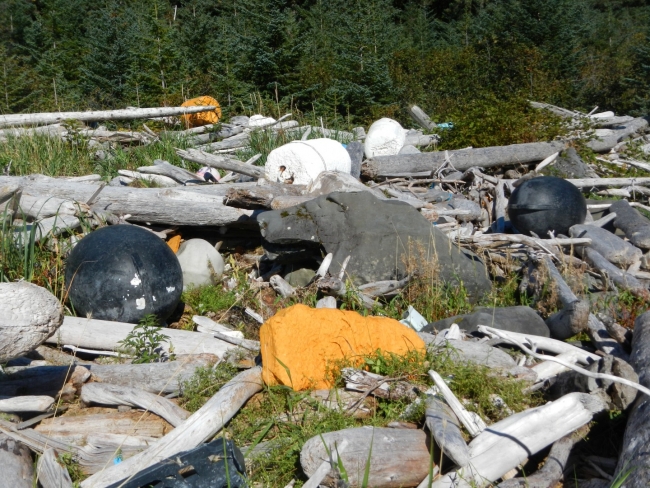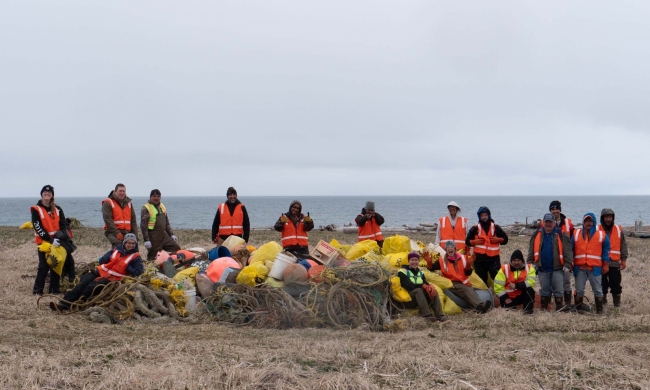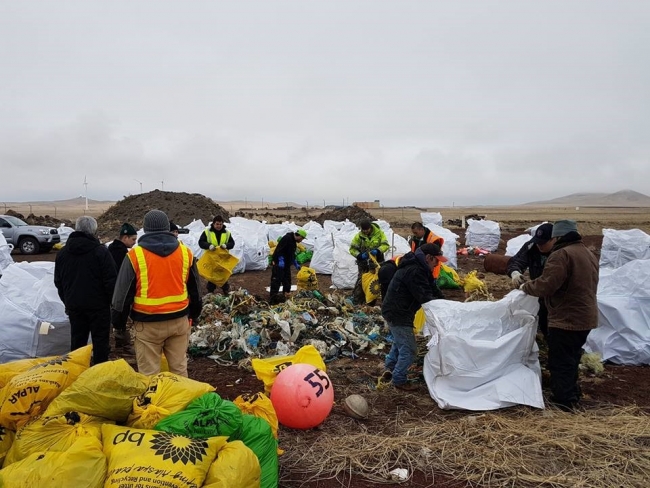Alaska is often thought of as the “last frontier.” For verification, one needs only look as far as the license plate. While the images of snow-covered mountains, isolated cabins, fishing boats, and amazing wildlife are all true to life, Alaska is also a place where marine debris is an especially challenging problem. And the same day-to-day complexities that have made Alaska a hotbed for “reality TV” production make marine debris operations uniquely challenging.
The first of these complexities is size. Alaska has over 40,000 miles of shoreline - that’s more than the rest of the United States combined. Accessing what are often remote and rugged beaches where debris builds up can be difficult, even in the best of conditions, but Alaskan conditions are rarely the calmest. This means there is a short field season where work can be done - in some places just a few months long. The sheer quantity of debris is also a challenge. Ocean currents and winter storms combine to bring huge amounts of debris to Alaskan shores every year; mile for mile some of the highest concentrations of debris are in Alaska. So, taken together you have a large area, with challenging conditions, and a high debris load. A formidable combination!
Fortunately, there is an active, innovative, and passionate marine debris community in Alaska. Alaskans are known for their creative problem solving and that’s something you can see in debris removal, prevention, and research projects in the region. Groups combine their direct, extensive knowledge of the local conditions and needs with emerging tools to find the best solutions.
Since the start of the Marine Debris Program (MDP), NOAA has funded projects across Alaska with the goal of better understanding and addressing the issue of marine debris in the state. Two newly funded projects are finding solutions to challenges on two of Alaska’s many islands, where you can only arrive by boat or plane, and the debris that is collected must be shipped out. On Kodiak Island, Island Trails Network (ITN) is executing a multi-pronged cleanup project to remove debris from across Kodiak Island and outlying islands in the archipelago. ITN has built a base of committed and skilled volunteers within the local community and from across different industries and sectors. These groups are conducting small boat cleanups on shorelines near the city of Kodiak, while working from larger vessels to execute overnight cleanup operations on more remote shorelines. Lastly, ITN is working with local fishers on a bounty program, paying a per weight reward for shoreline debris collected from around remote fishing camps.
On the Pribilof Islands, marine debris has been an identified issue for many years. Because of their position in the Bering Sea, these islands receive a large amount of debris each year, much of it from fishing, shipping, and other maritime activities. Some of the earliest data on entanglement impacts to marine mammals comes from St. Paul and St. George Islands, and the local community has been active in cleanup dating back decades. This year, with the support of a removal a grant from the NOAA Marine Debris Program, the Aleut Community of St. Paul is leading a project to collect debris from high priority shoreline on St. Paul and St. George. To help target these efforts and also build a better understanding of debris patterns and trends, the project will also use Unmanned Aerial Systems (UAS) to assess debris, in many cases paired with shoreline monitoring to ground-truth results.
Across the entire state – from the Arctic to Southeast Alaska and the Aleutians to Prince William Sound, there are numerous groups working to remove, prevent and understand debris and its impacts. The work done and the tools used may vary, but the goal is a common one – to assess, remove, and prevent debris.



